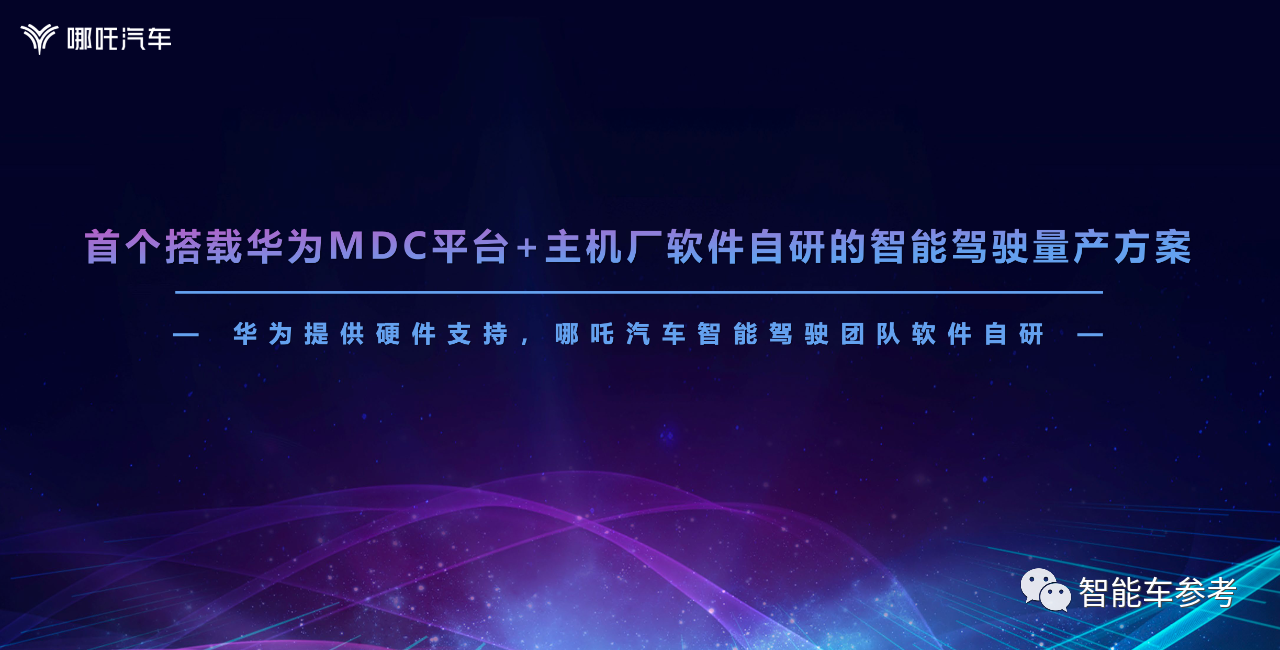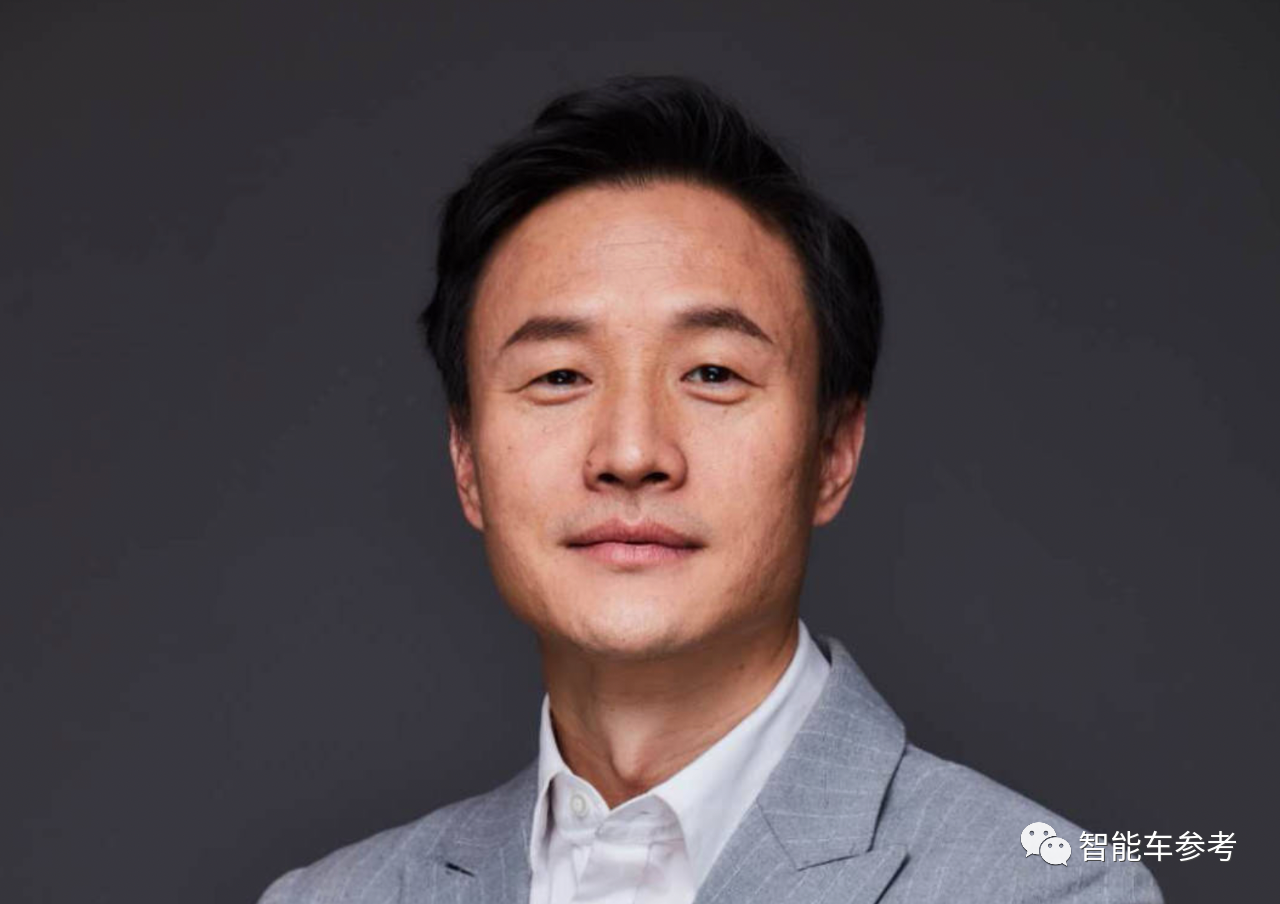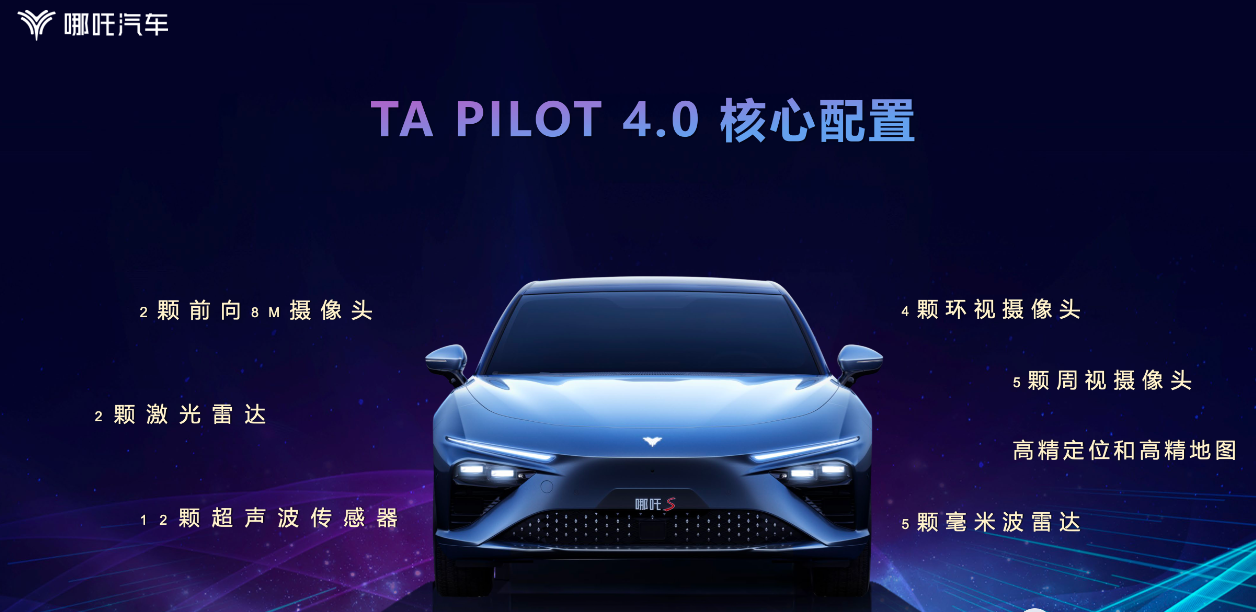Wanbo Fazuo Copilot Temple
Smart Car Reference | WeChat Official Account AI4Auto
NETA Motors, which had previously kept a low profile to grab sales and market share, now has a new goal:
To achieve “parity with the top players in the industry” in intelligent driving upon its debut – regardless of whether it is XPeng or NIO. And it is worth noting that NETA’s main focus is still on the cost-effective vehicle market, and founder Zhang Yong has also openly said that they aim to make cars for the people.
So why does NETA think it can produce cost-effective vehicles and compete with top players?
On the one hand, through its collaboration with Huawei. However, NETA also emphasized that Huawei is only responsible for the hardware, while the algorithm software is 100% independently developed in-house by NETA.
NETA will hold the “soul” of intelligent driving in its own hands.

What kind of solution is NETA using to catch up?
NETA’s intelligent driving solution has an official codename, “TA Pilot.”
The latest mass production version is TA Pilot 4.0, based on a multi-sensor fusion route that particularly emphasizes the role of LiDAR in 5km end-to-end scenarios.

According to NETA, the hardware for TA Pilot 4.0 is provided by Huawei, including the MDC610 intelligent driving platform and two 96-line solid-state LiDARs.
The platform hardware is capable of up to 200TOPS computing power, with a 2L5R11V configuration that is relatively low in computing power compared to mainstream intelligent driving platform configurations on the market.
According to official information, TA Pilot 4.0 will be first installed in the flagship model of NETA’s first model, the “NETA S.”
According to the official data, the NETA S is equipped with two solid-state LiDARs, 11 auxiliary driving cameras, two forward-facing 8M cameras, four ring cameras, five panoramic cameras, five millimeter wave radars, and 12 ultrasonic sensors.

The release is scheduled for the end of this year, and other key information such as pricing has not yet been disclosed by the official. But it is widely estimated that the NETA S will cost around 200,000 RMB, similar to XPeng’s P5 as both are classified as B-segment vehicles.
“Parity with the top players in the industry” is the key phrase for NETA’s TA Pilot 4.0.
As the name suggests, no matter the computing power, hardware configuration, etc., NETA aims to achieve the same level of functionality as the current mainstream intelligent driving systems.According to NIO’s disclosure, TA Pilot 4.0 can achieve three major scenes, including NNP high-speed navigation, NCP city navigation, and five functions related to memory parking, valet parking, autonomous summoning, and the last five kilometers of city terminal, respectively.
From the perspective of actual functionality, main players in the field such as XPeng X Pilot, Huamo Zhixing H Pilot, and Baidu ANP, have already pushed or publicly demonstrated the intelligent driving functions of the three major scenes to car owners.
In theory, NIO’s TA Pilot 4.0 isn’t just talk, because according to official introductions, it has already reached the level of the first generation.
However, it’s important to note that this is all theoretical.
Because according to official statements, TA Pilot 4.0 is currently in the testing phase, and it hasn’t been publicly demonstrated for performance testing.
During the media communication meeting, NIO did provide a test video.
However, attendees were strictly forbidden from taking pictures, and mobile phone cameras were covered with a corresponding “physical mask”.
NIO’s official explanation was that it’s still in the confidentiality phase.
In addition, even if TA Pilot 4.0, slated for mass production later this year, won’t be delivered with the car initially.
The NCP and city terminal scene functions need to be implemented through OTA based on progress with high-precision maps.
As for the OTA timetable, the official has not disclosed it.
NIO Intelligent Driving Roadmap
In addition to TA Pilot 4.0, NIO also revealed other new developments in intelligent driving.
NIO stated that the production version of TA Pilot 2.0 is already mounted in mid- to low-end car models, the NIO U and NIO V series, and can achieve ADAS functions in the city and on highways.
TA Pilot 3.0, which is about to be produced, mainly adds high-speed navigation assistance on the basis of ADAS functions. It’s currently not disclosed which NIO model it will be available on initially.
TA Pilot 5.0 is also the ultimate form of NIO’s intelligent driving, primarily aimed at L4-L5 advanced automatic driving. It’s still in the development phase, and NIO hasn’t revealed when the product will be released.## From Low-end Market to Full Coverage of Intelligent Driving from Mid to High-end, and Eventually to Complete Automatic Driving: Keywords of NETA’s Intelligent Driving Route
NETA’s intelligent driving route is characterized by self-developed full-stack technologies and cost control.

According to NETA, self-development is emphasized for two reasons.
Firstly, NETA believes that new forces like itself have an advantage over traditional automakers in the intelligent development field, since all players are starting from the same line.
In NETA’s words, they have caught up with the “best era.”
Secondly, self-developed full-stack technologies give the automaker greater autonomy in the long-term investment process of intelligent driving, in terms of product updates and the collection of data and experience. As a result, NETA believes that it can maintain its competitive edge.
In other words, the “soul” of NETA’s intelligent driving will not be handed over to other companies like Huawei.

Therefore, NETA emphasizes boundary issues in cooperation with Huawei.
According to official sources, in the TA Pilot 4.0 project, Huawei only provides intelligent driving platforms and sensor hardware. All software, such as algorithms, is fully self-developed by NETA.
NETA Auto has become the industry’s first intelligent driving mass production plan with a combination of the Huawei MDC platform and in-house developed software for automakers.
On the other hand, NETA revealed that the reason for not considering higher computational hardware platforms is mainly due to cost considerations.
NETA’s head of intelligent driving, Wang Junping, said that 200 TOPS computing power is enough for all-scenario intelligent driving, and there is no need to increase costs because of a focus on computational power.
This is in line with NETA Auto CEO Zhang Yong’s theory of “smart-value ratio”.

Other Progress of NETA
Compared with other competitors, NETA, who originally focused on occupying the mid-to-low-end market, had a much lower impact in the smart driving field among the new automakers at the beginning.
But after obtaining investment from Zhou Hongyi, the founder of 360, and achieving a record of delivering over 10,000 cars for several months in a row, it entered the first camp of new automakers. Recently, it has also begun to show its strength in the direction of smart cockpit and intelligent driving.
In November of last year, NETA made a high-profile debut at the Guangzhou Auto Show by releasing the full-stack intelligent safety automobile platform, called the “Mountain-Sea Platform”. The platform is responsible for automotive information and network security, and was developed by Zhou Hongyi’s 360 team.
Following that is the debut of TA Pilot 4.0 and a package of intelligent driving products plan.
In terms of talent and capital investment in related fields, NIO is also accelerating its expansion recently.
According to official sources, NIO has two research and development centers in Shanghai and Beijing, with Shanghai as its headquarters and Beijing R&D center mainly focused on algorithm development and data development. These two R&D centers are currently in the expansion phase.

As of now, the total number of NIO’s intelligent institute personnel has exceeded 600, and it is expected that the team will expand to more than 1,000 people by the end of this year.
Among them, the intelligent driving team has more than 300 members, and the proportion of algorithm software personnel is 70%. The team is expected to exceed 500 people within this year.
According to the plan, NIO is expected to invest a total of RMB 10 billion in intelligent research, with an average annual investment of RMB 800-1,000 million.
Moreover, where the money comes from, NIO should also be in good shape:
Public information shows that NIO has now opened a Pre-IPO round of financing with a target valuation of $7 billion and plans to launch an IPO in Hong Kong within the year.
— The end —
This article is a translation by ChatGPT of a Chinese report from 42HOW. If you have any questions about it, please email bd@42how.com.
